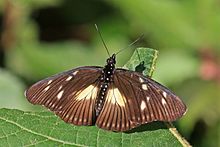
Acraea cabira, the yellow-banded acraea, is a butterfly of the family Nymphalidae that is native to Africa.

Acraea esebria, the dusky acraea, is a butterfly of the family Nymphalidae from southern and eastern Africa.
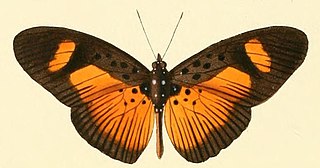
Pseudacraea eurytus, the false wanderer, is a butterfly of the family Nymphalidae. It is found in Africa.

Charaxes etheocles, the demon charaxes, is a butterfly in the family Nymphalidae. It is found in Senegal, Guinea, Sierra Leone, Liberia, Ivory Coast, Ghana, Togo, Nigeria, Cameroon, Gabon, the Central African Republic, the Republic of the Congo, Angola, the Democratic Republic of the Congo, Sudan, Ethiopia, Uganda, Kenya, Tanzania and Zambia.

Bematistes epaea, the common bematistes, is a butterfly in the family Nymphalidae. It is found in Senegal, Guinea-Bissau, Sierra Leone, Liberia, Ivory Coast, Ghana, Togo, Benin, Nigeria, Cameroon, Equatorial Guinea, the Republic of the Congo, Angola, the Democratic Republic of the Congo, Sudan, Ethiopia, Uganda, Kenya, Tanzania, Malawi and Zambia.
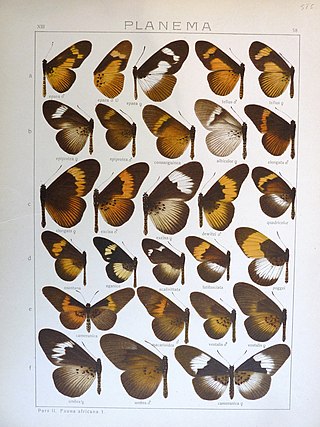
Bematistes epiprotea, the insipid bematistes, is a butterfly in the family Nymphalidae. It is found in southern Nigeria, Cameroon, Gabon, the Republic of the Congo, the southern part of the Democratic Republic of the Congo, Sudan and western Tanzania.

Bematistes tellus, the orange bematistes, is a butterfly in the family Nymphalidae. It is found in Nigeria, Cameroon, Equatorial Guinea, the Republic of the Congo, the Democratic Republic of the Congo, Uganda and Tanzania.

Acraea althoffi, the Althoff's acraea, is a butterfly in the family Nymphalidae. It is found in Cameroon, Gabon, the Democratic Republic of the Congo, the Central African Republic, Uganda, Kenya and Tanzania.
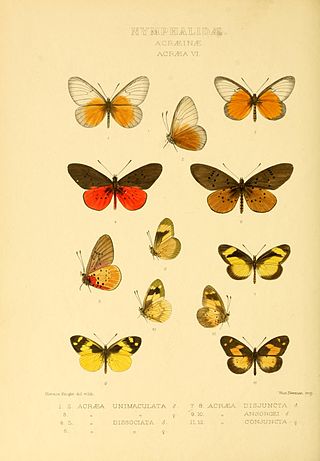
Acraea ansorgei is a butterfly in the family Nymphalidae. It is found in Kenya, Uganda and the Democratic Republic of the Congo.

Acraea jodutta, the jodutta acraea, is a butterfly in the family Nymphalidae. It is found in Guinea, Sierra Leone, Liberia, Ivory Coast, Ghana, Togo, Nigeria, Cameroon, Equatorial Guinea, São Tomé and Príncipe, Gabon, the Republic of the Congo, the Central African Republic, Angola, the Democratic Republic of the Congo, Sudan, Uganda, Kenya and Ethiopia.
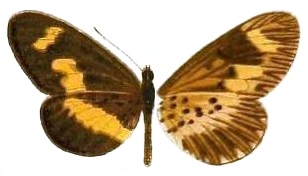
Acraea oberthueri, Oberthuer's acraea, is a butterfly in the family Nymphalidae. It is found in Nigeria, Cameroon, Equatorial Guinea, the Republic of the Congo, the southern and eastern part of the Democratic Republic of the Congo and western Tanzania.
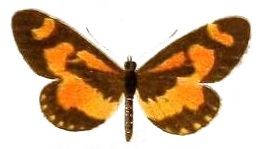
Acraea sotikensis, the Sotik acraea, is a butterfly in the family Nymphalidae which is native to the African tropics and subtropics.

Acraea penelope, the Penelope acraea or Penelope's acraea, is a butterfly in the family Nymphalidae. It is found in Nigeria, Cameroon, the Republic of the Congo, the Democratic Republic of the Congo, Uganda, Kenya and Tanzania. The habitat consists of sub-montane forests.

Euphaedra luperca, the Nigerian blue forester, is a butterfly in the family Nymphalidae. It is found in southern Nigeria and western Cameroon.

Euphaedra medon, the widespread forester, is a butterfly in the family Nymphalidae. It is found in Senegal, the Gambia, Guinea-Bissau, Guinea, Sierra Leone, Liberia, Ivory Coast, Ghana, Togo, Benin, Nigeria, Cameroon, Equatorial Guinea, Gabon, the Republic of Congo, Angola, the Democratic Republic of the Congo, Sudan, Ethiopia, Uganda, Kenya, Tanzania and Zambia.

Euphaedra xypete, the common pink forester, is a butterfly in the family Nymphalidae. It is found in Guinea-Bissau, Guinea, Sierra Leone, Liberia, Ivory Coast, Ghana, Togo, Nigeria and western Cameroon. The habitat consists of forests.

Euphaedra themis, the common Themis forester, is a butterfly in the family Nymphalidae. It is found in the Guinea, Sierra Leone, Liberia, Ivory Coast, Ghana, Togo, Benin, Nigeria and western Cameroon.
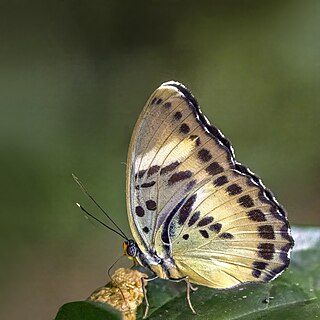
Euphaedra ceres, the Ceres forester, is a butterfly in the family Nymphalidae. It is found in Gambia, Guinea, Sierra Leone, Liberia, Ivory Coast, Ghana, Togo, Benin, Nigeria, Cameroon, Gabon and the Republic of the Congo.

Pseudacraea dolomena, the variable false acraea, is a butterfly in the family Nymphalidae. It is found in Nigeria, Cameroon, Gabon, the Republic of the Congo, the Central African Republic, Angola, the Democratic Republic of the Congo, Uganda, Kenya, Tanzania and Zambia.
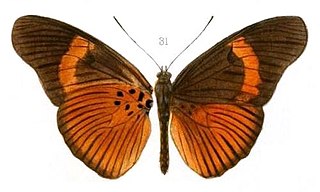
Pseudacraea kuenowii, or Kuenow's false acraea, is a butterfly in the family Nymphalidae. It is found in Nigeria, Cameroon, Gabon, the Republic of the Congo, Angola, the Democratic Republic of the Congo, Kenya, Uganda and Zambia.


